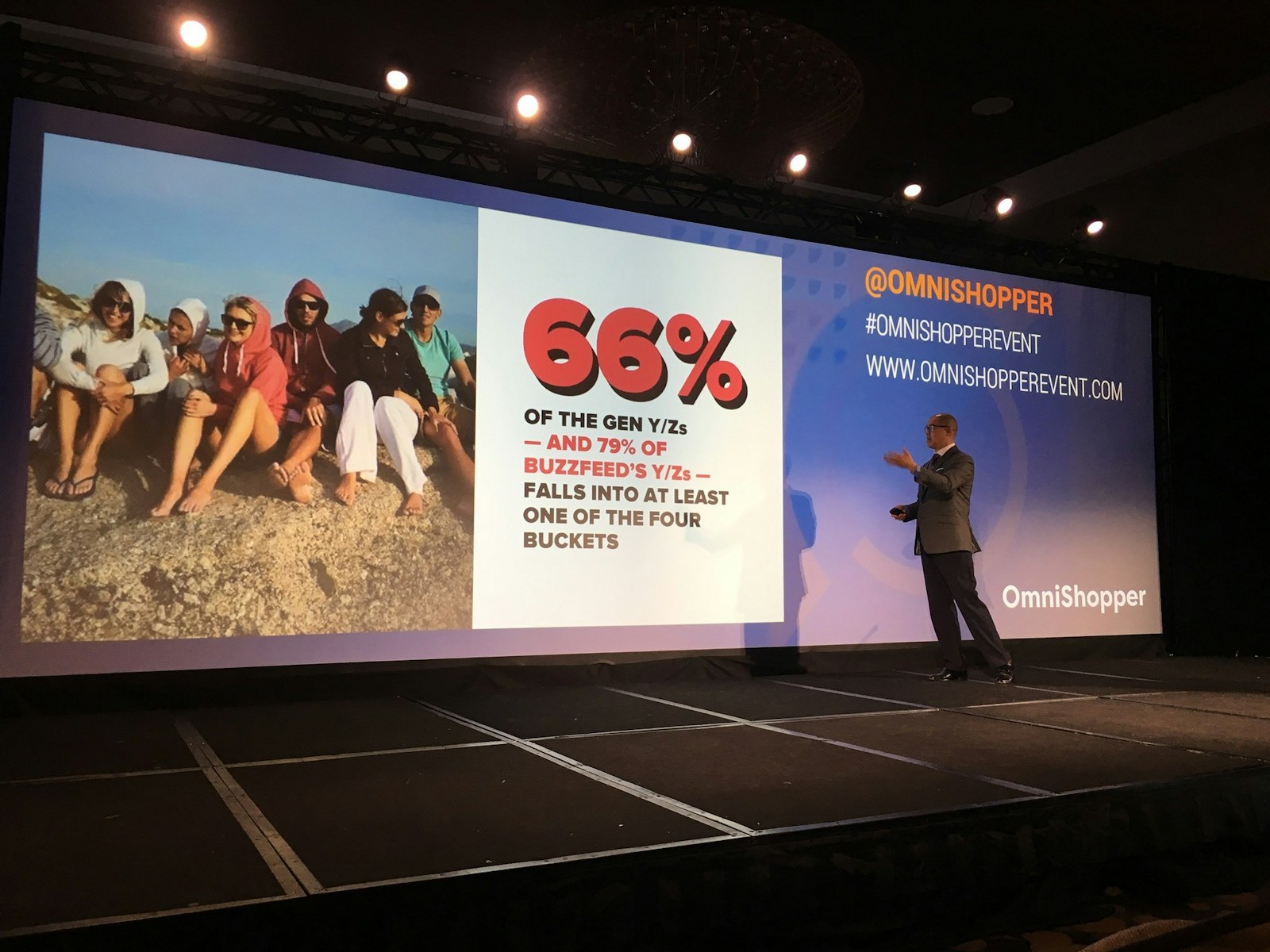“It’s Too Early For the Feels”

I think it’s safe to say I did not expect to see sniffles and tears around the room today during Edwin Wong’s speech on digital humanism and recoding culture. But surprise, the VP of Research and Insights at BuzzFeed incited all the feels early this morning with a thought-provoking discussion on the rise of the individual and cultural relevance as a driving force in developing content today. To illustrate his points, Edwin used powerful real-life examples of individuals or groups redefining what it means to be “normal” and how we can connect to audiences in scale by focusing on the individual. Several people in the room suddenly had "bad allergies" causing watery eyes.
Edwin walked the room through compelling realities that exist in our world today. Namely, traditional demographics are dissolving and psychographics are evolving. The result? The rise of the individual is trending in marketing.
According to Edwin, over 80% of Gen Y/Z-ers think that traditional demographics like gender, sexuality, or race, fall on a spectrum. As a result, what was once a rather small “fringe audience” is growing significantly. In other words, fringe interests and niche products are (1) taking a bigger, majority piece of the pie, and (2) there is a larger overlap in cultural groups. Consequently, traditional demographics no longer offer insights that appropriately drive market strategies. Similarly, psychographics are evolving. As a society, we are redefining roles of what it is to be a man or woman – who we think he or she should be is changing. There is no gender norm. Again, targeting based on traditional insights no longer packs the same punch as it maybe once did.
So, what to do? “Stop targeting, start understanding.” After all, if you don’t understand the influence or predisposition of your customer, how can you develop content that resonates? As Edwin described, we can do this in part by paying attention to the “power of one” in consumer behavior. In other words, the notion that by creating for one, you can ultimately create for many by providing content that speaks to a niche culture, fuels identity, and creates empathy. As Edwin noted, in empathizing with others, “we see past the specifics of what we know, to experiences that might actually be universal.”
Here’s where we cue the tears. To illustrate his point, Edwin showed the crowd the following video:
As you can see in the video, you don’t have to be a child of an asian immigrant to empathize with this group – we can reach scale with relevance and shifting content from being about the brand or retailer to a focus on the consumer; to focus on content that makes people say “yes, that is so me.” It’s about covering stories that are important and resonate with the individual.
If you’d like to connect and talk more about content that resonates, please reach out. We will be at the conference all week talking about The Physics of Brand, design, and the stories that inspire us.
Aaron Keller, Kitty Hart, and I write for the OmniShopper event blog, please reach out if you have a story to share.
Lucy Robb
Research and Strategy Associate, Capsule Design


